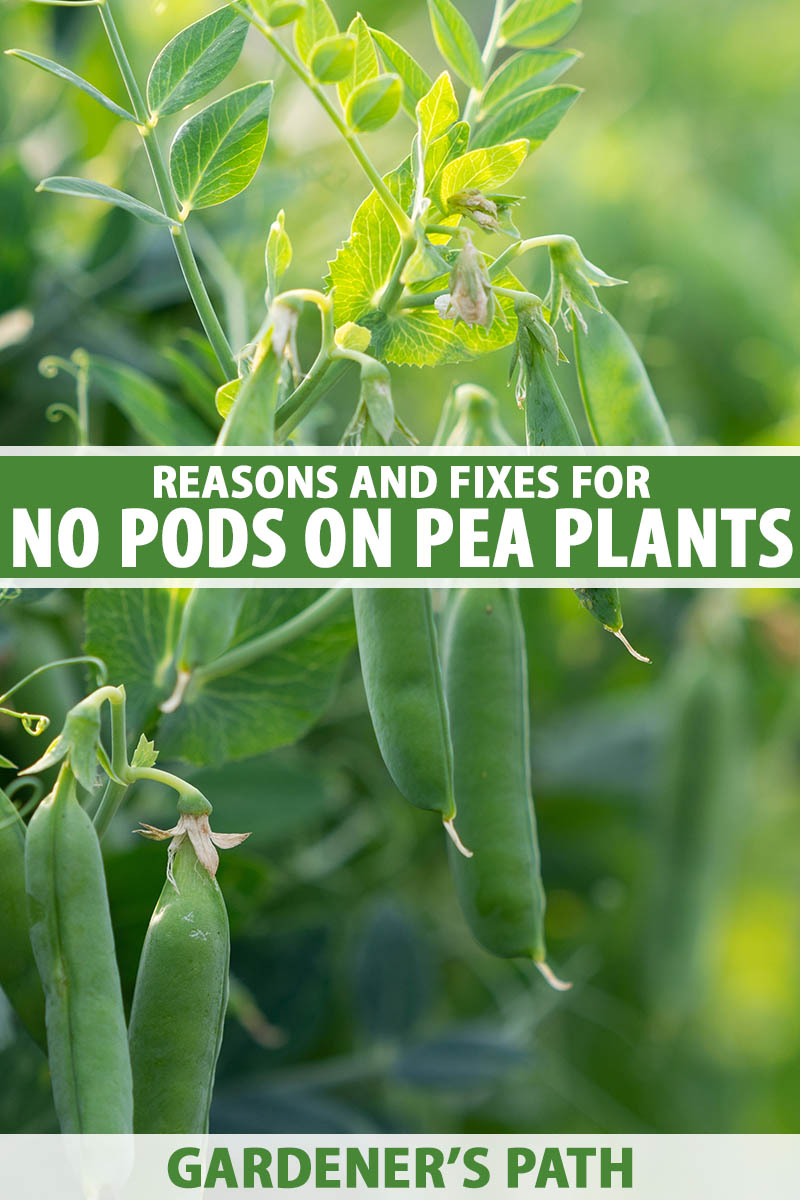Unless you’re growing ornamental sweet peas, the whole point of having peas (Pisum sativum) in your garden is to enjoy the edible pods.
If your vines aren’t producing pods, you’re wasting your time, right?
There are a number of reasons that a relatively healthy-looking plant will fail to produce those big, plump pods. Sometimes you can fix the cause and control the problem, and sometimes you can’t.
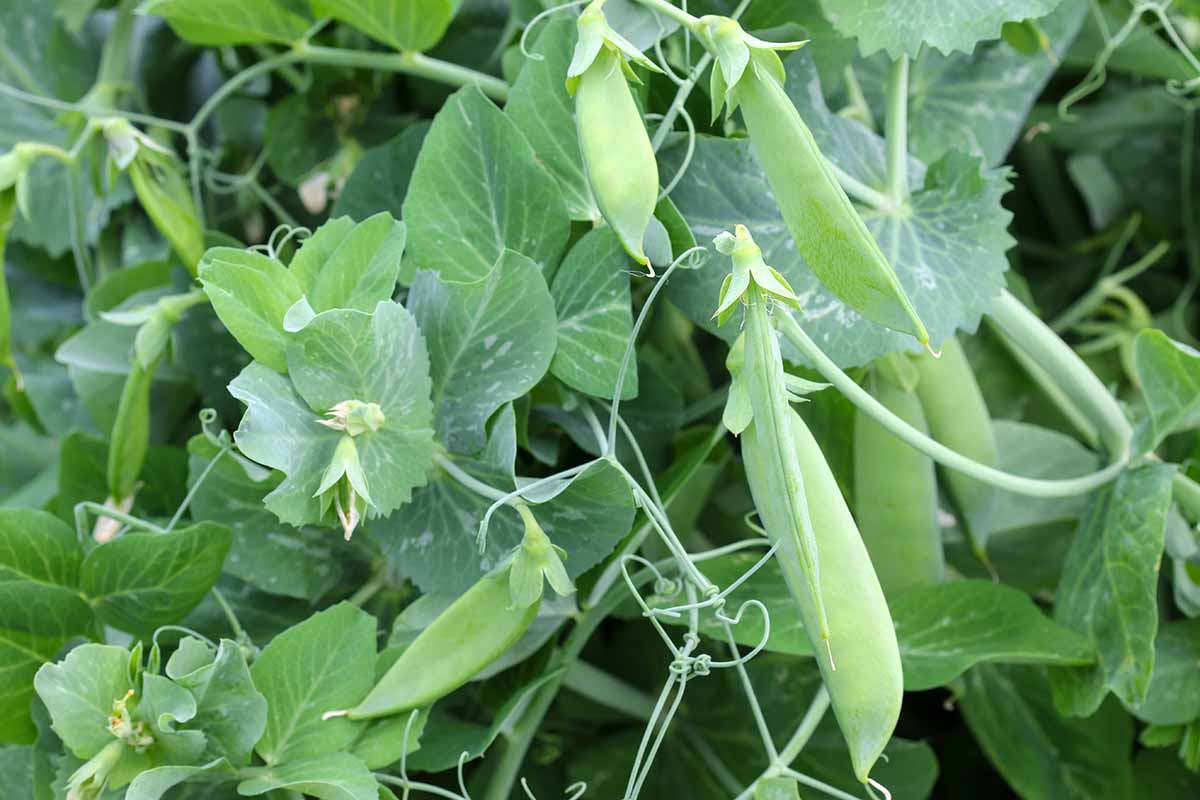

We link to vendors to help you find relevant products. If you buy from one of our links, we may earn a commission.
In this guide we’re going to help you figure out what the cause is so you can act accordingly.
If you’re lucky and quick, you can fix the problem and still be able to enjoy the fruits of your labor.
Here are the top reasons why peas fail to produce pods:
Pests and disease can cause the plant to stop growing or even die. But most diseases will cause the entire plant to suffer.
It’s not just pods you need to worry about in these cases, as the entire plant will be in bad shape.
To learn about how to grow peas and the pests and diseases that might plague your plants, visit our guide.
In this guide, we’re going to cover the plants that otherwise look fine but aren’t forming pods. If your plant is producing empty pods, read about the reasons for that here.
1. Heat
Some like it hot, as the saying goes. Peas do not. Once the temperature starts climbing above 65°F, the plant’s growth will slow or even stop.
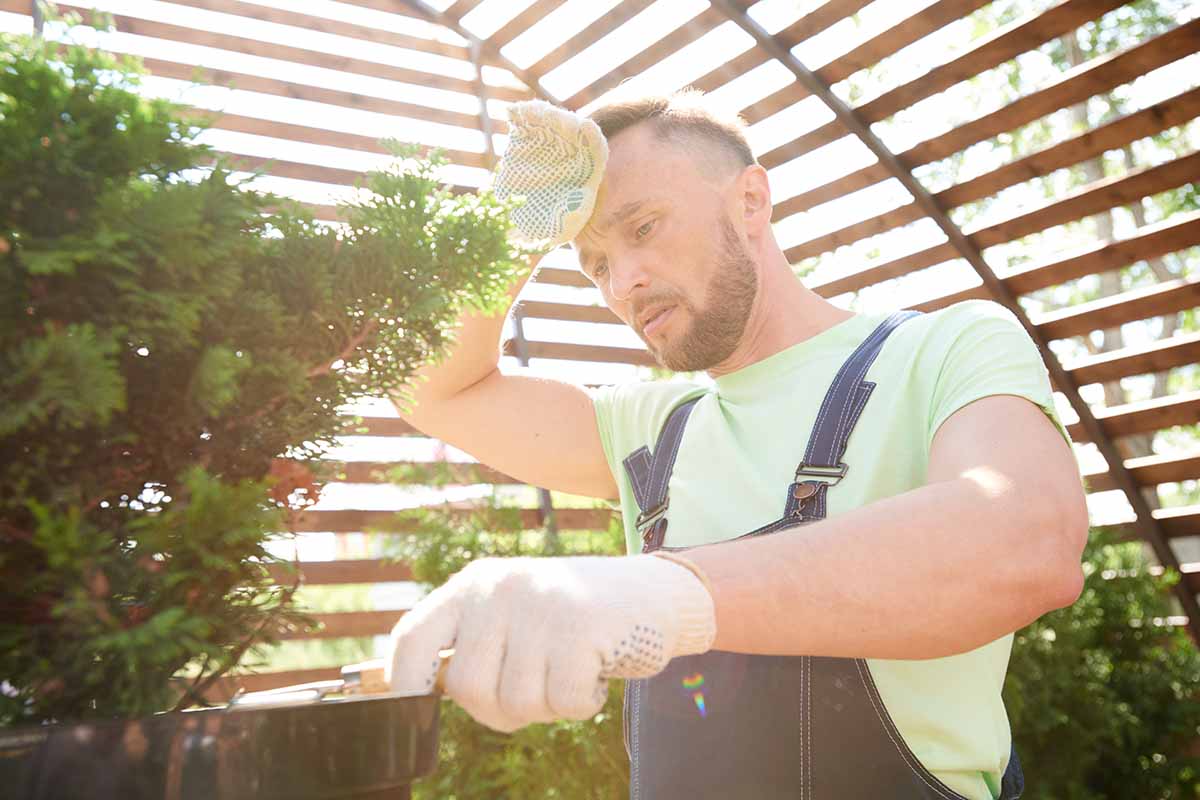

You can’t control the weather, but if you are able, cover the plants with shade cloth in the afternoon during the hottest part of the day.
As long as it isn’t too hot, this should be enough to make a difference and restart growth. If it’s over 85°F or so, there’s not much you can do. Your plants are probably toast.
When it’s too hot and there’s no relief on the horizon, you might just need to pull your plants and start again when the weather cools off.
That’s why P. sativum is primarily a spring and fall crop. If you have a short period in the spring and fall that is cool enough, start your seeds indoors four to six weeks in advance of planting out.
2. Lack of Nutrition
A plant that doesn’t flower or is slow-growing and leggy is often malnourished. Whether your soil is depleted or you didn’t add fertilizer, either way, your peas need nutrients to grow well.
Before assuming this is the issue, do a soil test. It’s always a smart practice to test your soil before planting in the spring or fall, no matter what you’re growing.
You never know what’s going on with the soil in your backyard until you check it out, and knowing what nutrients your soil has in excess and what it lacks will help all of your crops, not just your peas.
Like all legumes, P. sativum fix nitrogen in the soil, so they rarely need nitrogen fertilizer, but that doesn’t mean they’ll never need it, and the plants certainly need potassium and phosphorus, along with all the other micronutrients like iron, zinc, and copper.
If you didn’t test your soil in advance of planting, it might not be too late to do a soil test and figure out what your soil needs. Then, amend accordingly, and your plants should develop blossoms followed by pods, assuming you have enough time left in the growing season.
Otherwise, chalk it up to a learning experience and try again the next time temperatures are appropriate.
3. Pollination Issues
If your plants look healthy and happy, with lush, leafy vines, and plenty of flowers, but no pods are forming, it might be a pollination problem. Looks like a case for Gregor Mendel.
Peas are self-pollinating (known as autogamy), which means they contain both the male and female parts in each flower and they can pollinate themselves.
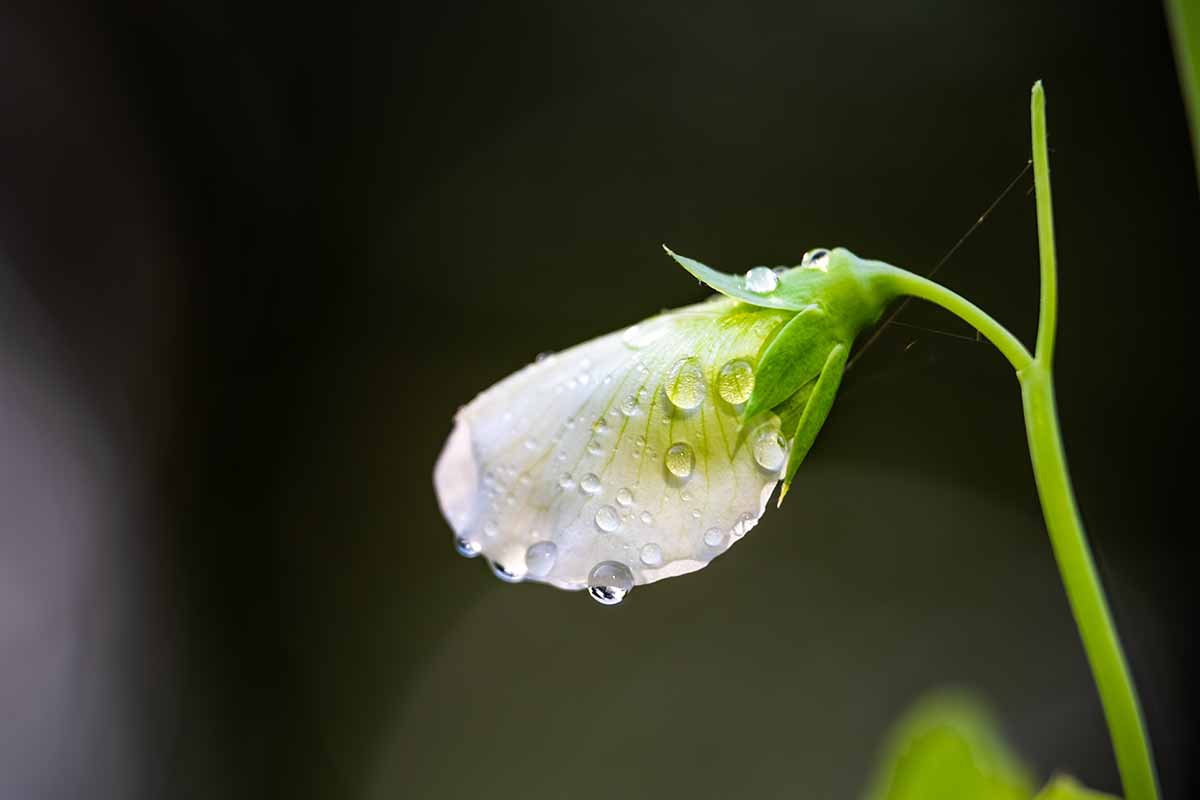

High temperatures and excessive or not enough humidity can reduce the amount of self-pollination that occurs.
Though they don’t require pollinators to facilitate pollination, they help. If you’re having a lot of rain or pollinators are scarce in your area, that could be a factor as well.
Wind helps increase pollination, so if you’re experiencing very still conditions, that could reduce pollination.
Insufficient water can also decrease pollination.
If your plant is no longer flowering, there’s not much you can do to resolve the situation. If flowers are still developing, make sure the plants have enough water and consider covering them during the afternoon if it’s exceptionally hot.
You can also hand-pollinate the flowers yourself. To do this, you’ll need to use a pair of sharp scissors and cut open the petal that’s protecting the stamen and stigma if they’re enclosed.
Use a small stick or toothpick and collect some of the pollen from the stamen. Wipe this onto the stigma of the same or another flower.
4. Too Much Nitrogen
Remember, peas and other legumes fix nitrogen in the soil under ideal circumstances.
In a nutshell, nitrogen fixation is when a plant takes nitrogen gas from the atmosphere and converts it into the usable ammonia form in the soil.
Peas and other legumes do this by working symbiotically with rhizobacteria Rhizobiaceae, α-Proteobacteria, which lives in the root nodules of the plant.
You can learn more about legume inoculants to promote nitrogen fixation in our guide.
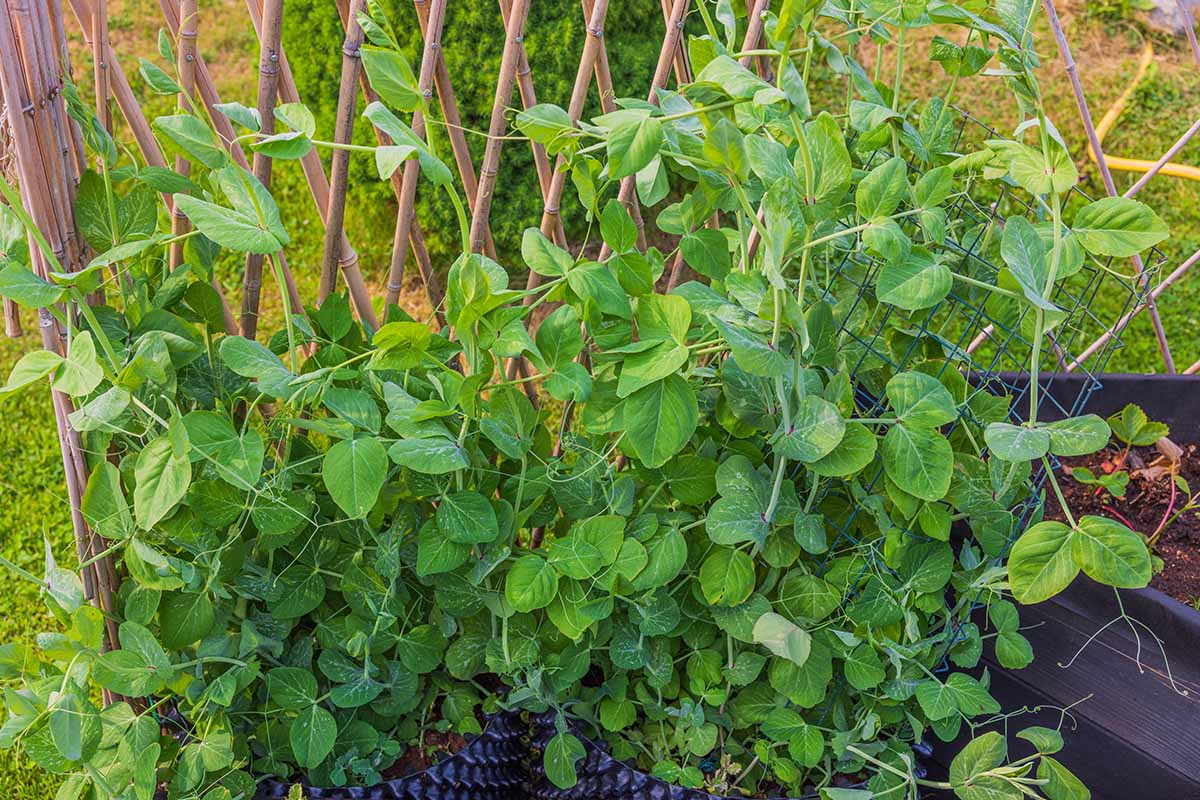

If you add nitrogen to the soil when the plant is already making that happen, it can result in too much nitrogen in the ground. This is called nitrogen toxicity.
Nitrogen toxicity causes excessive leaf production, dark green foliage, slow growth, and reduced flowering. No flowers mean no pea pods.
I’m going to say it one more time: test your soil! Don’t even think about adding fertilizer until you do.
5. Viruses
There are three viruses that infect peas: Pea Enation Mosaic Virus (PEMV), Pea Streak Virus (PeSV), and Pea Seed-Borne Mosaic Virus (PSbMV). These are spread by pests like aphids.
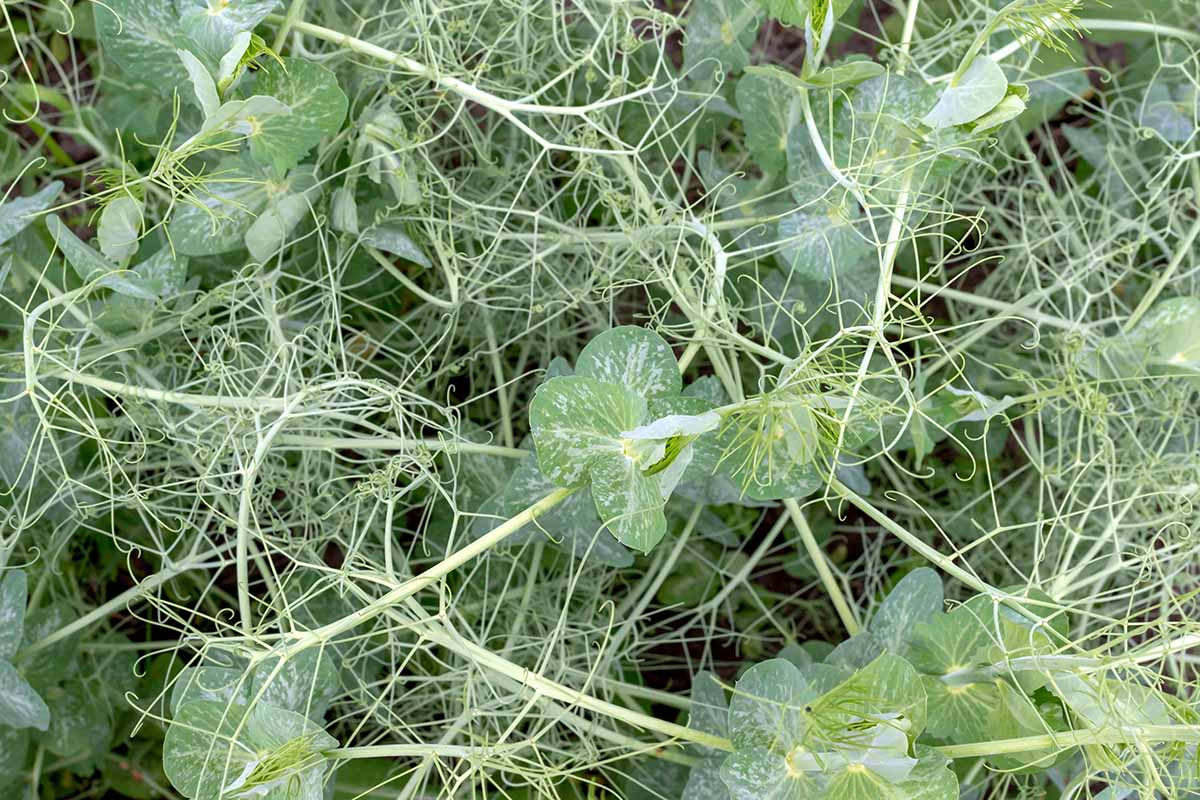

All three of these viruses cause unusual growth, foliage discoloration, and distortion.
PEMV and PSbMV cause distorted, stunted or absent pea pods.
Sadly, there’s nothing you can do once the plants are infected. It’s best to pull them and dispose of them in the trash. The viruses can’t be eliminated and they can spread to other nearby plants.
Speaking of spread, the virus is carried by aphids and on infected seeds, so keeping aphids out of the garden is crucial.
Once they arrive and start to feed, it’s too late, so you need to prevent them in the first place. There are lots of ways to do this, from trap cropping to netting.
Learn about your options in our guide to controlling aphids.
Your other prevention strategy is to grow resistant cultivars like ‘Almoto’, ‘Aspen,’ ‘Aurora,’ ‘Citation,’ ‘Corvallis,’ ‘Freezer 50,’ ‘Green Sugar,’ ‘Knight,’ ‘Mohawk,’ ‘Oregon Sugar Pod,’ ‘Perfected Freezer 60,’ ‘Prospector,’ and ‘Trident.’
Plump Pea Pods Are Possible
Gardening is always an adventure. Sometimes your seedlings fail to thrive, sometimes a 100-year-old tree gives up the ghost, and sometimes your pea vines decide not to develop pods.


These kinds of events force us to become garden detectives, poking into the soil, prodding stems, and examining leaves with a magnifying glass. Unless you’re the Sherlock Holmes of growing vegetables, it can often be a guessing game.
I hope our guide armed you with the information you needed to use your detective skills to figure out the issue and fix it. If you’re still having trouble, let us know what’s going on in the comments and we’ll see what we can do to help.
Then, continue on your pea-growing journey by digging into these guides next:


